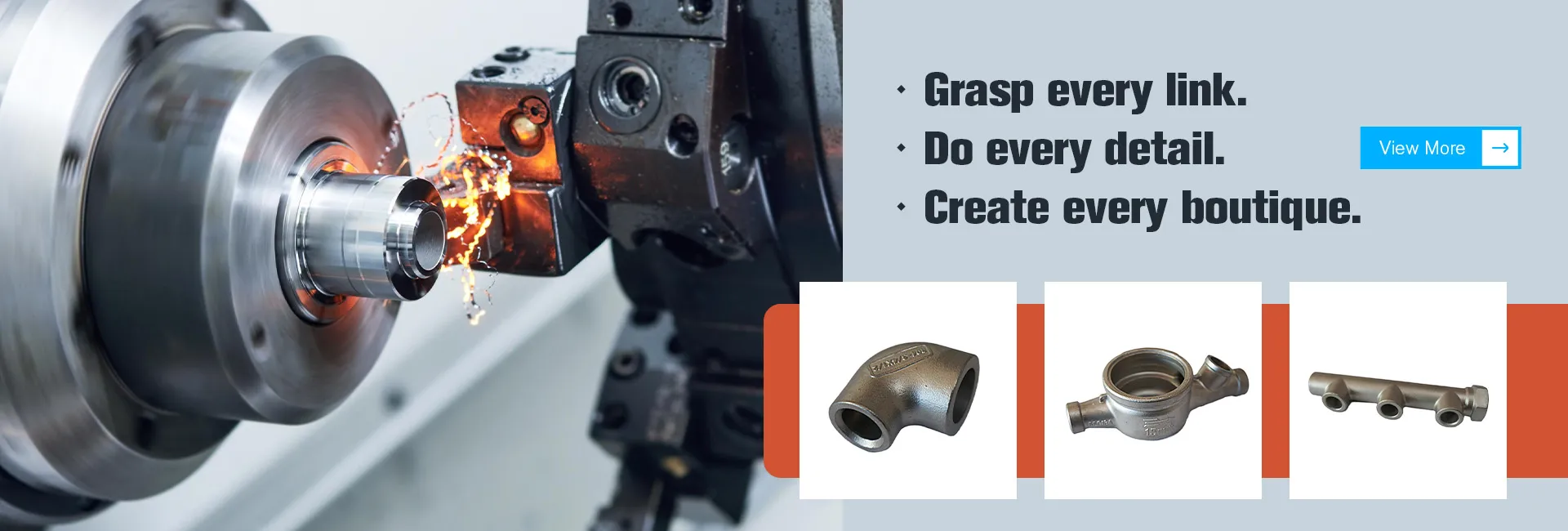plunger sleeve die casting
The Role of Plunger Sleeve in Die Casting
In the world of manufacturing, die casting stands out as an efficient and cost-effective process for producing high-quality metal components. Among the various components and mechanisms involved in die casting, the plunger sleeve plays a critical role in ensuring the success of the operation. In this article, we will explore the function, significance, and advantages of the plunger sleeve in the die casting process.
What is a Plunger Sleeve?
A plunger sleeve is an essential component of the die casting machine. It acts as a protective housing for the plunger, which is responsible for injecting molten metal into the die cavity. The plunger sleeve helps to guide the plunger and reduces wear and tear, ensuring smoother operation and enhancing the overall longevity of the machine and its components. Additionally, the sleeve prevents contamination and oxidation of the molten metal, which is crucial for maintaining the quality of the final product.
Function of the Plunger Sleeve
The primary function of the plunger sleeve is to facilitate the injection of molten metal into the die with precision and control. The sleeve ensures that the plunger moves freely within it while providing a seal that minimizes the leakage of molten metal during the injection process. This is vital because even a small amount of leakage can lead to defects and inconsistencies in the cast product.
Moreover, the plunger sleeve is designed to withstand the high pressures and temperatures associated with die casting. As molten metal can reach temperatures exceeding 700 degrees Celsius, the materials used for the plunger sleeve must exhibit excellent thermal resistance and structural integrity to prevent deformation or failure during operation.
Importance of Plunger Sleeve in Quality Control
Quality control is paramount in the die casting industry, and the plunger sleeve contributes significantly to this aspect. By ensuring that the plunger operates smoothly and without obstruction, the sleeve helps to maintain consistent injection rates and pressures. This consistency is crucial for producing parts with tight tolerances and superior surface finishes.
plunger sleeve die casting

Furthermore, the sleeve aids in minimizing the formation of air pockets and gas entrapments within the cast product. These defects can compromise the strength and reliability of the final components, so having a well-designed plunger sleeve is essential for achieving high-quality outcomes.
Advantages of Using Plunger Sleeve
1. Extended Equipment Life Since the plunger sleeve protects the plunger from abrasive wear caused by molten metal, it significantly extends the lifespan of both the plunger and the die casting machine.
2. Improved Efficiency By reducing friction and ensuring smooth movement, the plunger sleeve enhances the overall efficiency of the die casting process. This results in shorter cycle times and increased productivity.
3. Cost-Effectiveness While there is an initial investment in high-quality plunger sleeves, the long-term savings due to reduced maintenance costs and improved productivity can be substantial.
4. Enhanced Product Quality With better control over the injection process, manufacturers can achieve higher quality standards in their cast products, attracting more business and improving customer satisfaction.
Conclusion
In summary, the plunger sleeve is a small yet indispensable component in the die casting process. Its ability to facilitate smooth operation, enhance quality control, and prolong the life of die casting equipment makes it a vital part of manufacturing high-quality metal components. As industries continue to seek more efficient and effective production methods, the significance of components like the plunger sleeve will only grow, solidifying their place in the future of manufacturing. Embracing advancements in materials and designs for plunger sleeves will undoubtedly lead to even greater improvements in the die casting process, contributing to innovations across various sectors.
-
OEM Sand Cast Pump Valve Fittings - Baoding Hairun Machinery And Equipment Trading Co., Ltd.NewsAug.01,2025
-
Custom OEM Impellers | High Efficiency & PrecisionNewsAug.01,2025
-
OEM Sand Cast Pump Valve Fittings - Baoding Hairun Machinery | Customization, Quality AssuranceNewsAug.01,2025
-
OEM Sand Cast Pump Valve Fittings - Baoding Hairun Machinery And Equipment Trading Co., Ltd.NewsAug.01,2025
-
OEM Sand Cast Pump Valve Fittings - Baoding Hairun Machinery And Equipment Trading Co., Ltd.NewsJul.31,2025
-
OEM Sand Cast Pump Valve Fittings - Baoding Hairun | Precision Engineering, CustomizableNewsJul.30,2025















